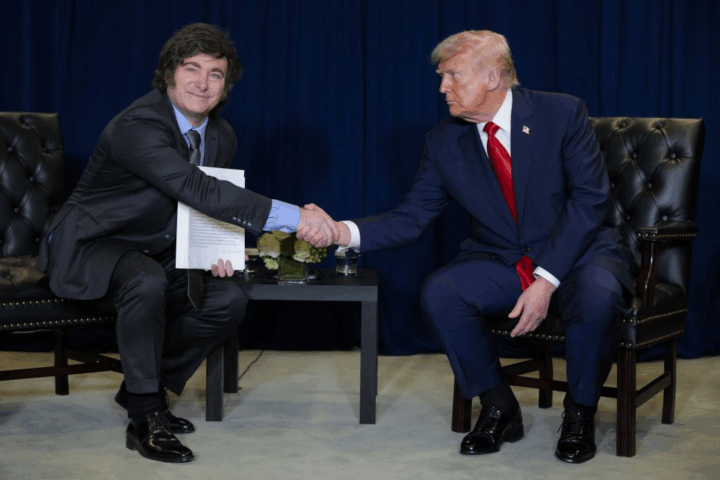In a world grappling with rising protectionism and shifting alliances, the United States and the United Kingdom have struck a landmark trade deal that signals a significant pivot in global economic relations. Announced in May 2025, this agreement is the first major US bilateral trade pact since the imposition of sweeping new tariffs by Washington in April 2025. It reshapes how two of the world’s largest economies interact, offering new opportunities, redefining sectoral dynamics, and signaling the trajectory of future US trade policy.
Market Access and Trade Expansion: Unlocking New Potential
At its core, the deal opens a lucrative $5 billion opportunity for fresh US exports to the UK, with American farmers, ranchers, and producers poised to reap substantial benefits.
Agricultural trade receives a substantial boost: provisions include $700 million in new US ethanol exports and $250 million in agricultural goods like beef. Previously, these exports were constrained by non-tariff barriers and regulatory discrepancies, many of which the UK has now agreed to reduce or eliminate.
Beyond agriculture, the deal introduces streamlined customs procedures and deeper regulatory alignment to facilitate quicker border clearances and reduce bureaucratic overheads, making it easier for exporters on both sides to access markets efficiently.
Tariff Reductions: A Mixed but Positive Picture
While the agreement doesn’t fully return to the pre-2025 low-tariff environment, it carves out significant concessions:
- British vehicles exported to the US will see tariffs drop from 27.5% to 10% for the first 100,000 units annually. Exports beyond this quota will face a 25% tariff.
- The steel and aluminum sectors in Britain breathe a sigh of relief as the US eliminates a 25% tariff, a move expected to safeguard thousands of jobs and stabilize an industry battered by years of trade uncertainty.
- The UK reciprocates by reducing its average agricultural tariff from 5.1% to 1.8%, enhancing market access for a wide range of US products.
- Perhaps most significantly for the energy sector, UK tariffs on US ethanol, previously a hefty 19%, will now be eliminated entirely.
Underpinning these moves is the establishment of a secure supply chain framework for steel, aluminum, and pharmaceutical products, aiming to shield critical industries from geopolitical disruptions.
Non-Tariff Measures: Laying a Foundation for Modern Trade
Beyond tariffs, the agreement breaks new ground in non-tariff areas:
- Government procurement markets will become more accessible, enabling companies from both nations to bid on public contracts that were previously out of reach.
- High-standard commitments on intellectual property, labor rights, and environmental standards mirror some of the strongest protections seen in contemporary trade agreements.
- In digital trade, the deal prohibits data localization requirements, a move that significantly benefits tech firms and paves the way for smoother cross-border data flows.
- Mutual recognition of professional qualifications in sectors such as engineering, architecture, and accounting promises to ease the mobility of highly skilled labor.
Cooperation also extends to investment security, export controls, and ICT vendor scrutiny, highlighting a shared interest in safeguarding critical technologies and infrastructure from strategic vulnerabilities.
Exclusions and Limitations: The Deal’s Shortcomings
Despite its breadth, the agreement leaves several contentious issues untouched:
- US companies will still have no direct access to the UK’s National Health Service (NHS), a politically sensitive sector in Britain.
- The UK’s digital services tax remains intact, continuing to target major US tech giants.
- British food standards will stay firmly in place, maintaining bans on products like US beef raised with growth hormones — a point of contention for American agricultural lobbies.
- Although the baseline tariff of 10% on most goods is the most favorable rate offered under the new US global tariff structure, it remains higher than pre-2025 levels, a sore point for UK negotiators.
Strategic and Economic Impact: Win-Win with Caveats
For the United States
For the US, the agreement broadens export opportunities across agriculture, manufacturing, aerospace, and high-tech industries, directly supporting American jobs and enhancing competitiveness. The aerospace sector, in particular, stands out with the UK agreeing to purchase $10 billion worth of Boeing aircraft, offering a boost to a sector challenged by global competition.
The deal is expected to generate $6 billion in annual tariff revenue for the US Treasury, a crucial source of income under the Trump administration’s protectionist trade policies.
For the United Kingdom
For the UK, struggling to carve out a new global identity post-Brexit, this deal represents a symbolic and strategic victory. By securing relief for key sectors such as steel and automotive, London demonstrates that it can still negotiate favorable terms outside the European Union framework.
The UK’s Office for Budget Responsibility (OBR) estimates that bilateral trade could surge by 15-20% over the next decade, translating into an additional $25-30 billion in annual trade flows by 2035.
Sectoral Winners and Losers
| Sector | Key Benefits/Challenges |
|---|---|
| Agriculture | Major boost for US exports; UK specialty foods gain US market access |
| Automotive | Lower tariffs for the first 100,000 vehicles; partial quota challenges |
| Steel & Aluminum | Tariff elimination supports struggling UK industries |
| Aerospace | Preferential access for US manufacturers; major aircraft sales |
| Digital & Financial | Stronger alignment; barriers to data flow removed |
| Pharmaceuticals | More resilient, streamlined supply chains |
| Consumer Goods | Expected 2-3% price drops over 6–18 months for select products |
Financial Markets: A Strong Positive Reaction
Markets reacted swiftly and optimistically to the deal’s announcement:
- The FTSE 100 rose by 2.1%, reflecting investor confidence in British industry’s new market prospects.
- The S&P 500 gained 1.3%, indicating Wall Street’s approval of enhanced export opportunities.
- US-UK-focused ETFs surged by an average of 3.7%, while trading volumes tripled, showcasing heightened investor enthusiasm.
British manufacturing stocks outpaced the broader market, rising 4.2% in the week following the announcement.
Political and Global Trade Context: A Precedent for Future Deals
This agreement is the first major US trade pact under President Trump’s second term and is likely to shape the architecture of future US trade deals. The 10% baseline tariff now appears to be a “best-case” outcome for America’s trading partners unless they offer significant strategic alignment.
It also cements the US-UK special relationship amid a global environment of heightened economic nationalism, with both countries pledging to continue negotiations, especially in digital trade and pharmaceuticals.
Implementation Timeline
| Phase | Timeline |
|---|---|
| Initial Announcement | April 2025 |
| Ratification Period | Through Q3 2025 |
| Early Implementation | Q4 2025 |
| Phased Tariff Reductions | Over 3–5 years |
| Full Implementation | By 2030 |
Over the next five years, businesses and industries will gradually adapt to the new frameworks, reaping full benefits by the decade’s end.
A Historic Yet Managed Trade Accord
The 2025 US-UK trade deal represents a pivotal milestone, offering substantial new opportunities for exporters, relief for critical industries, and a blueprint for managed, reciprocal trade in a less-globalized world.
While it does not fully recreate the frictionless trade environment of the early 2020s, it demonstrates that strategic partnerships — backed by pragmatic concessions — remain not only possible but increasingly vital in a fragmented global economy.
The persistence of higher baseline tariffs underlines a fundamental shift: free trade is giving way to fair, reciprocal, and strategically aligned trade. For both Washington and London, this deal may very well mark the beginning of a broader and enduring realignment of global commerce.
References and Further Reading
- The New York Times. “Trump Administration to Announce Trade Deal With Britain.” May 7, 2025. https://www.nytimes.com/2025/05/07/business/economy/trump-trade-britain.html
- Reuters. “Trump, Starmer hail limited US-UK trade deal, but 10% duties remain.” May 8, 2025. https://www.reuters.com/world/europe/us-britain-expected-announce-tariff-deal-thursday-2025-05-08/
- New York Post. “Trump details framework of landmark US-UK trade deal.” May 8, 2025. https://nypost.com/2025/05/08/us-news/trump-details-framework-of-landmark-us-uk-trade-deal-wont-be-any-red-tape/
- Al Jazeera. “US-UK trade deal: How are Trump’s global tariff talks shaping up?” May 8, 2025. https://www.aljazeera.com/news/2025/5/8/us-uk-trade-deal-how-are-trumps-global-tariff-talks-shaping-up
- City A.M. “Analysis: What is in the US-UK trade deal and what does it mean?” May 8, 2025. https://www.cityam.com/analysis-what-is-in-the-us-uk-trade-deal-and-what-does-it-mean/
- The White House. “Fact Sheet: U.S.-UK Reach Historic Trade Deal.” May 8, 2025. https://www.whitehouse.gov/fact-sheets/2025/05/fact-sheet-u-s-uk-reach-historic-trade-deal/
- Financial Times. “UK and US agree new trade deal as tariffs fall.” May 8, 2025.
- BBC News. “US-UK trade deal: Key points and reactions.” May 8, 2025.
- The Guardian. “What the US-UK trade deal means for Britain.” May 8, 2025.
- Bloomberg. “US-UK Trade Pact: Winners and Losers.” May 8, 2025.
- Office for Budget Responsibility (UK). “Economic Impact Assessment: US-UK Trade Agreement.” May 2025.
- US Department of Commerce. “US-UK Bilateral Trade Data Summary 2024-2025.” May 2025.
- UK Department for Business and Trade. “US-UK Trade Deal: Sectoral Analysis.” May 2025.
- Congressional Research Service. “US-UK Trade Relations: 2025 Update.” May 2025.
- Bank of England. “Governor Bailey comments on US-UK trade deal.” May 8, 2025.
- US Treasury. “Tariff Revenue Projections: Post-US-UK Deal.” May 2025.
- UK Parliament. “Debate on the US-UK Trade Agreement.” May 9, 2025.
- S&P Global. “Market Response to US-UK Trade Deal.” May 9, 2025.
- FTSE Russell. “Impact of US-UK Trade Deal on UK Equities.” May 9, 2025.
- Bloomberg ETF Desk. “US-UK Focused ETFs Surge After Trade Deal.” May 9, 2025.
- US Chamber of Commerce. “Business Community Reacts to US-UK Trade Agreement.” May 8, 2025.
- Confederation of British Industry (CBI). “CBI Statement on US-UK Trade Deal.” May 8, 2025.
- International Trade Centre. “US-UK Trade Flows: 2024 Data.” May 2025.
- World Trade Organization. “US-UK Trade Agreement Notification.” May 2025.
- UK Office for National Statistics. “UK-US Trade: 2024 Figures.” May 2025.
- The Economist. “A New Era for US-UK Trade?” May 8, 2025.
- Law360. “Legal Analysis: US-UK Trade Deal Provisions.” May 9, 2025.
- Wall Street Journal. “US-UK Trade Pact: What’s in the Fine Print?” May 8, 2025.
- CNBC. “US-UK Trade Deal: Market and Investor Response.” May 9, 2025.











